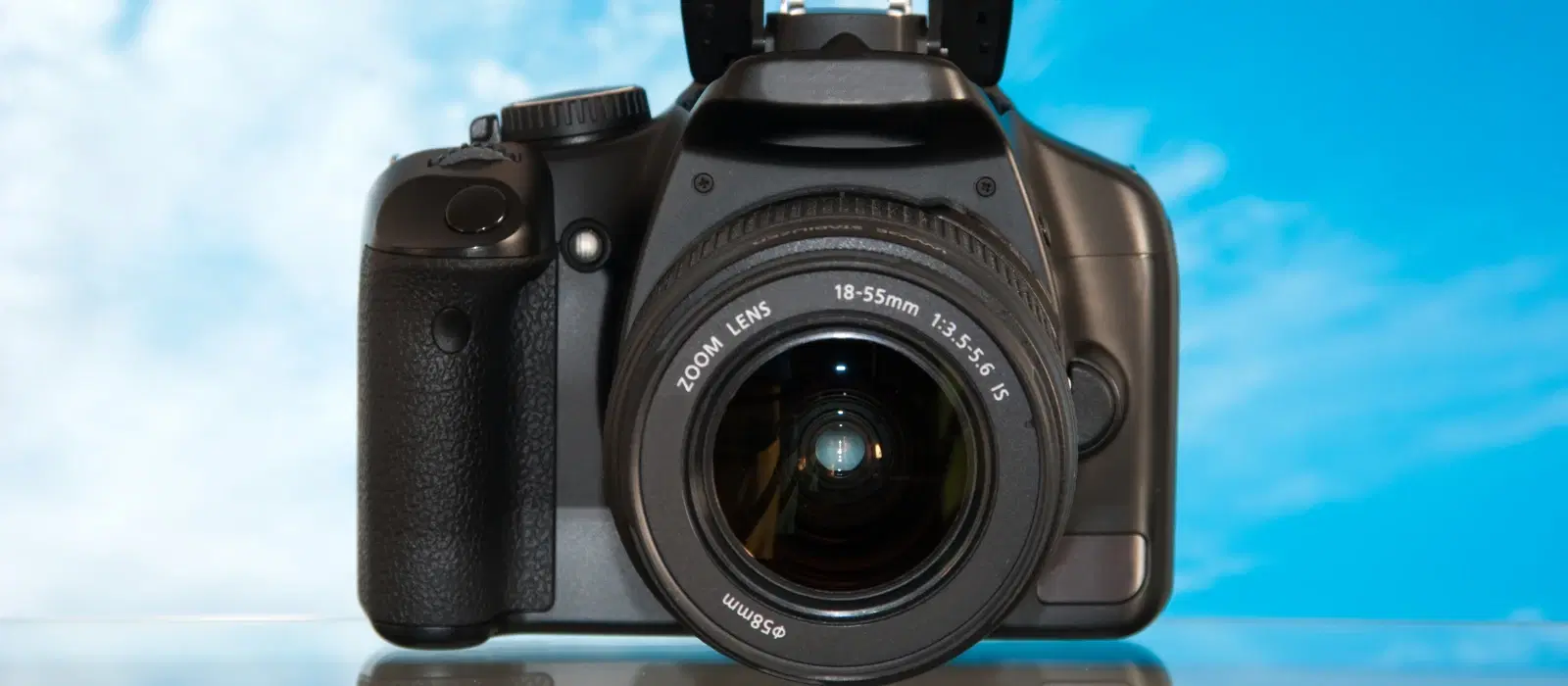
Consumer Electronics
•06 min read
Did you know the right dslr camera lens can transform your photography from amateur to professional? For beginners, the journey into the world of DSLR camera lenses might seem daunting, but understanding the basics can elevate your digital photography to new heights. This article will guide you through choosing the best dslr camera lens for beginners by explaining different lens types, key features, and how each lens can cater to various photography styles.
A dslr camera lens is an essential component of your camera setup. It controls the light that enters the camera to form an image on the sensor. The lens works in harmony with the camera body to deliver sharp, vivid images. For those starting out, recognising the functions and components of these lenses—such as glass elements, aperture, and focus mechanisms—helps in understanding how every shot is captured.
There are various types of lenses, each suited to different photographic needs. Among the most popular are prime lenses and zoom lenses. A prime lens offers a fixed focal length, traditionally known for its superior sharpness and simplicity, making it an excellent choice for portrait photography. On the other hand, a dslr zoom lens, with its variable focal length, provides versatility. It allows you to adjust the angle of view depending on your subject, making it ideal for dynamic shooting scenarios.
When choosing your dslr lens, there are several key features to keep in mind:
Focal Length: The focal length determines the field of view. Shorter focal lengths capture wider scenes, while longer ones are perfect for close-ups or telephoto perspectives.
Aperture: The aperture size affects both the exposure and the depth of field. Wider apertures permit more light, which is advantageous in low-light conditions.
Lens Mount Compatibility: Ensuring that your lens is compatible with your dslr camera body is crucial for optimal performance. Always check that the lens mount suits your particular camera model.
A wide angle dslr lens typically boasts a short focal length, offering a broad field of view. This lens type is ideal for landscape and architectural photography where capturing expansive scenes is key.
Macro lenses allow you to get up close and personal with your subject. A dslr macro lens is specifically designed for close-up shots, making it perfect for capturing intricate details of small subjects such as insects or delicate flowers.
For those passionate about wildlife or sports photography, a dslr telephoto lens is essential. With longer focal lengths, it brings distant subjects closer, ensuring you never miss a moment.
Reiterating the benefits of a fixed focal length, the dslr prime lens provides excellent sharpness and clarity. Renowned examples often recommended for portrait photography include lenses around the 50mm focal length, enabling beautifully blurred backgrounds and crisp subject details.
Before settling on a lens, take a moment to evaluate your photography interests. Are you drawn to sweeping landscape shots, intimate portraits, or capturing the minute details of everyday objects? Understanding your interests will guide you towards a lens tailored to your style, whether you require a versatile dslr zoom lens or the precision of a prime lens.
Your budget plays an important role in lens selection. As a beginner, you might be exploring affordable yet quality options. Balancing price with performance is essential; researching and comparing camera lens price details can be highly beneficial when deciding on the right accessory for your camera setup.
One of the most effective ways to make an informed decision is to read dslr lens reviews from credible sources. These reviews help you understand real-world performance and offer comparisons on features like image stabilisation and lens sharpness. Insights gathered from these reviews can streamline your selection process, ensuring you choose a lens that aligns with your photography aspirations.
When comparing lenses, consider key metrics such as focal length, aperture, and the availability of features like image stabilisation. A carefully laid out comparison, possibly in tabular format, may include aspects like the versatility of the dslr zoom lens versus the crisp clarity of a dslr prime lens. For beginners, understanding these metrics is a stepping stone to making well-informed purchases.
Pro Tip from Tata Neu: Always test lenses in-store at Croma before making an online purchase. This ensures you get a feel for the lens and can make an informed decision, while also earning up to 5% NeuCoins on your purchase.
A versatile option is generally a dslr zoom lens with an 18-55mm range, balancing quality and flexibility suited for various photography styles.
Consider your photography goals, budget, and key features like focal length and aperture. Also, consult dslr lens reviews and test the lens in-store if possible.
A prime lens offers a fixed focal length with superior image quality, while a zoom lens provides multiple focal lengths, offering more versatility.
Wide angle dslr lenses are less ideal for portraits as they might distort facial features. Prime lenses around 50mm usually deliver better results.
No, it is important to ensure that the lens mount is compatible with your dslr camera body for seamless integration and performance.
In summary, choosing the best dslr camera lens for beginners involves understanding the different types of lenses and their applications. Whether you lean towards the precision of a prime lens, the flexibility of a zoom lens, or specialized lenses like macro, wide angle, or telephoto options, being informed about focal lengths, apertures, and compatibility is vital. Balancing your photography goals and budget while consulting detailed lens reviews will pave the way to a smarter, more efficient purchase. With the ease of shopping at Croma and the rewards of NeuCoins on Tata Neu, elevating your photography experience has never been simpler. Happy shooting!